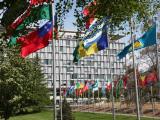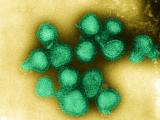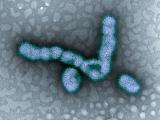Jul 23, 2009 (CIDRAP News) - The World Health Organization (WHO) recently posted surveillance and status updates for regions where the pandemic H1N1 is just gaining a foothold, including the Mideast, Africa, and parts of Asia and the Pacific, which showed Southeast Asia as the hardest hit of those areas.
Most public health experts say the number of lab-confirmed H1N1 cases greatly underestimates the true burden of the disease, and the WHO on Jul 16 discontinued its global case counts, saying the updates were becoming less useful as a surveillance tool and that reporting all of the confirmed cases was placing a great burden on countries experiencing widespread transmission. However, it said it would provide regular updates on the spread of pandemic flu in newly affected countries.
In the Mideastern locations included in the WHO's Eastern Mediterranean region, 890 lab-confirmed cases have so far been reported in 19 countries, according to an update posted yesterday on the WHO's regional Website. The WHO said 257 cases were locally transmitted. Egypt is the only country in the region that has reported a death from the novel H1N1 virus.
Saudi Arabia has the most cases in the Mideast, 232, followed by Egypt with 157, Lebanon with 79, and Palestine with 78. The only countries in the region that have not reported a confirmed case so far are Pakistan and Somalia.
Meanwhile, 12 of the 46 countries included in the WHO's Africa region have reported 174 lab-confirmed cases with no deaths, the WHO reported on Jul 21. South Africa has reported the most cases, 119, followed by Kenya with 22. The WHO said it has activated regional and sub regional crisis management teams and that stockpiles of pandemic medications have been dispatched to all of the countries.
In Southeast Asia, 5,684 lab-confirmed novel H1N1 cases have been reported in 7 of 11 countries included in the WHO's Southeast Asia region, according to a Jul 20 update. Thailand leads with 5,120 cases, followed by India (308) and Indonesia (172). All of the region's deaths have been reported from Thailand, which has linked 32 fatalities to the virus. So far, four countries in the region have not reported any confirmed cases: Bhutan, North Korea, Maldives, and Timor-Leste.
Meanwhile, the WHO's Western Pacific regional office said on Jul 21 that the pandemic H1N1 influenza is now dominant in Singapore and Taiwan. Health officials in Taiwan report the novel H1N1 now accounts for 88% of all circulating flu strains, and officials in Singapore report that the new virus makes up 53% of all reported flu cases.
Two of the 37 jurisdictions covered in the WHO's Western Pacific region have reported their first novel H1N1–related deaths: Guam and Tonga. Fifty-five deaths from the virus have been reported from the region, most of which are from Australia.
In related news, the WHO warned yesterday that the pandemic H1N1 virus is a threat to patients with immunosuppressive diseases such as HIV/AIDS, which it said is a particular concern for Western Pacific countries, in which people suffering from the diseases have less access to antiretroviral therapy than those in other parts of the world. The WHO recommended that country pandemic preparedness plans address the needs of people living with HIV/AIDS.
See also:
Jul 21 WHO Africa region pandemic H1N1 update
Jul 22 WHO Western Pacific region statement on people living with HIV/AIDS


















